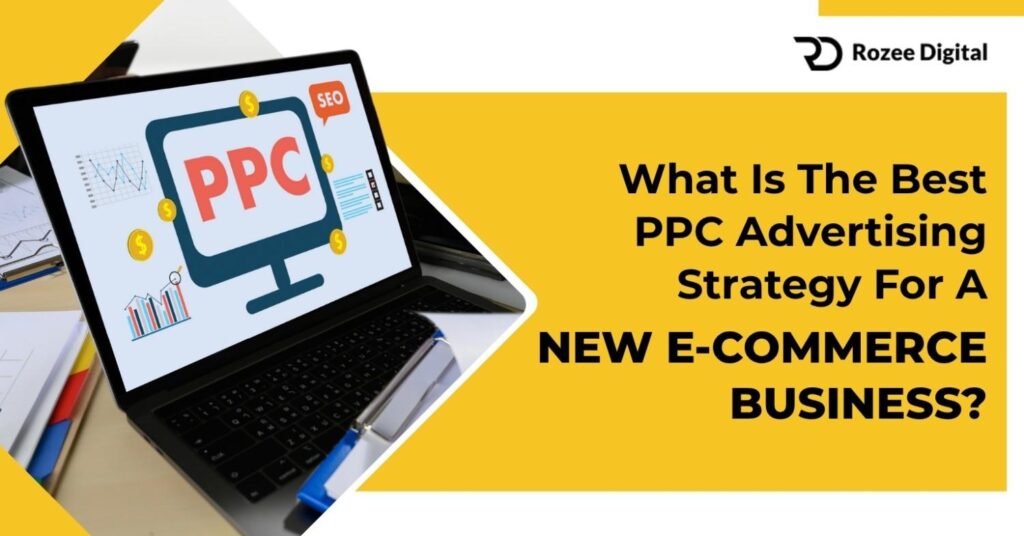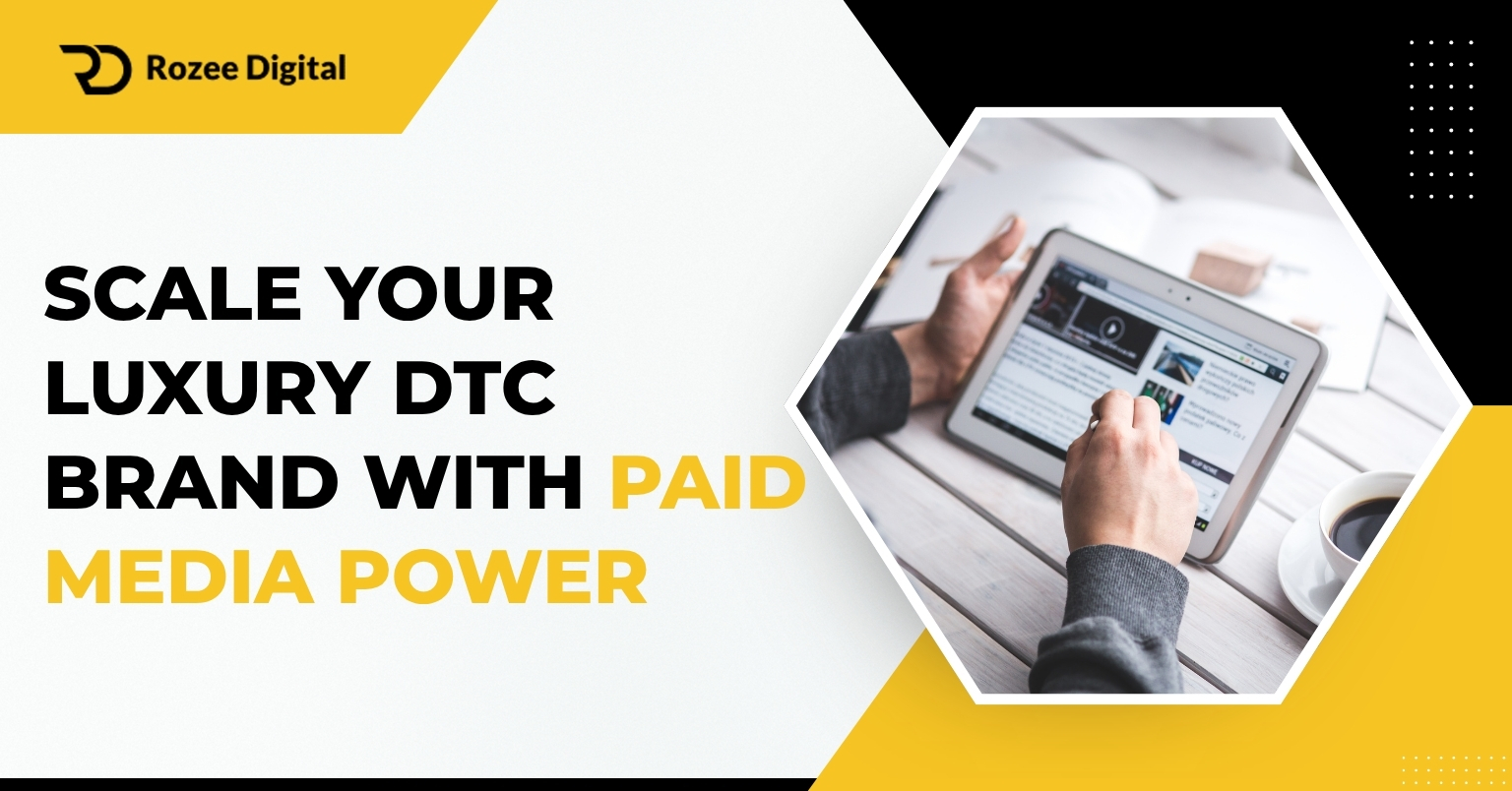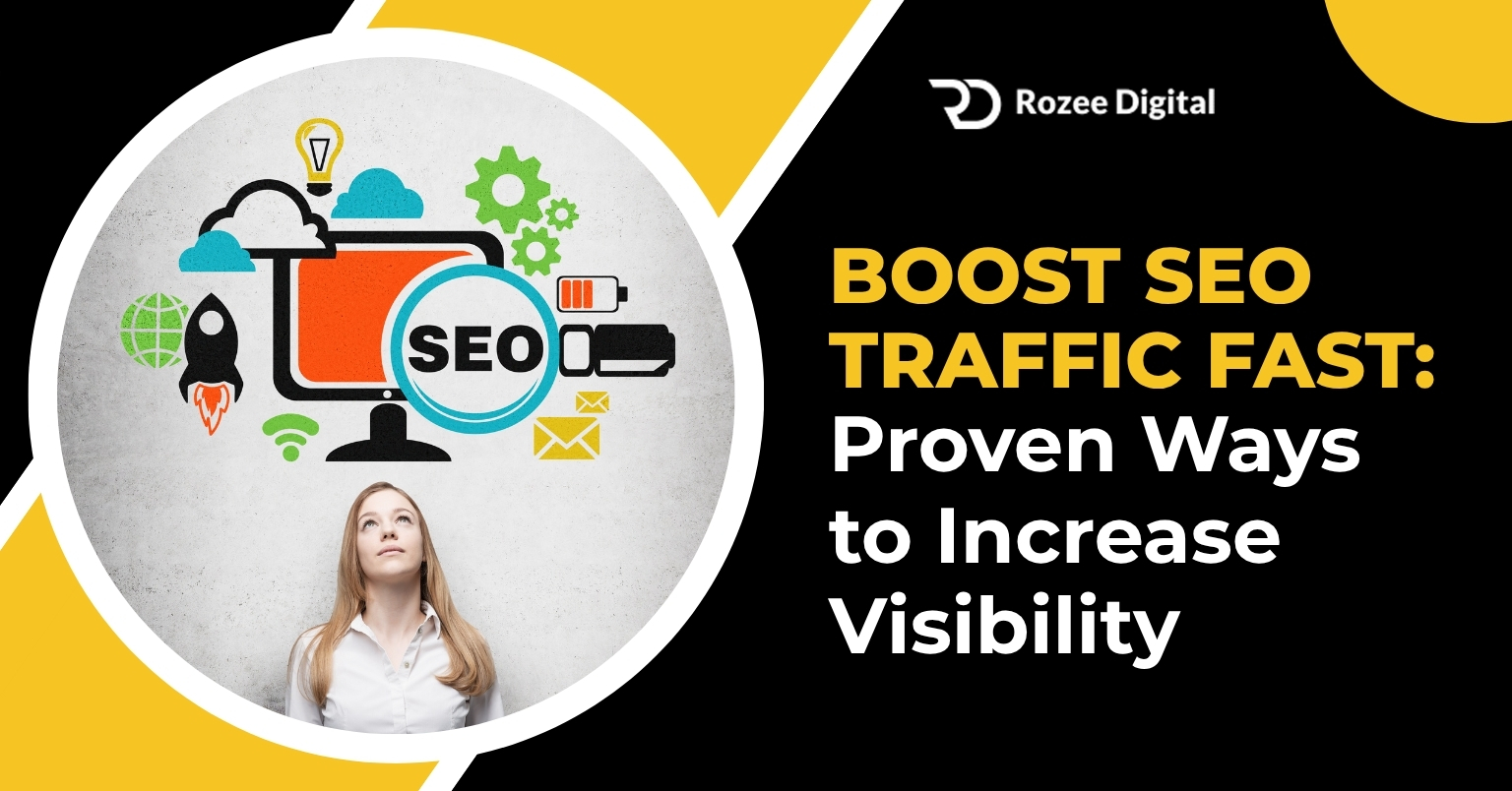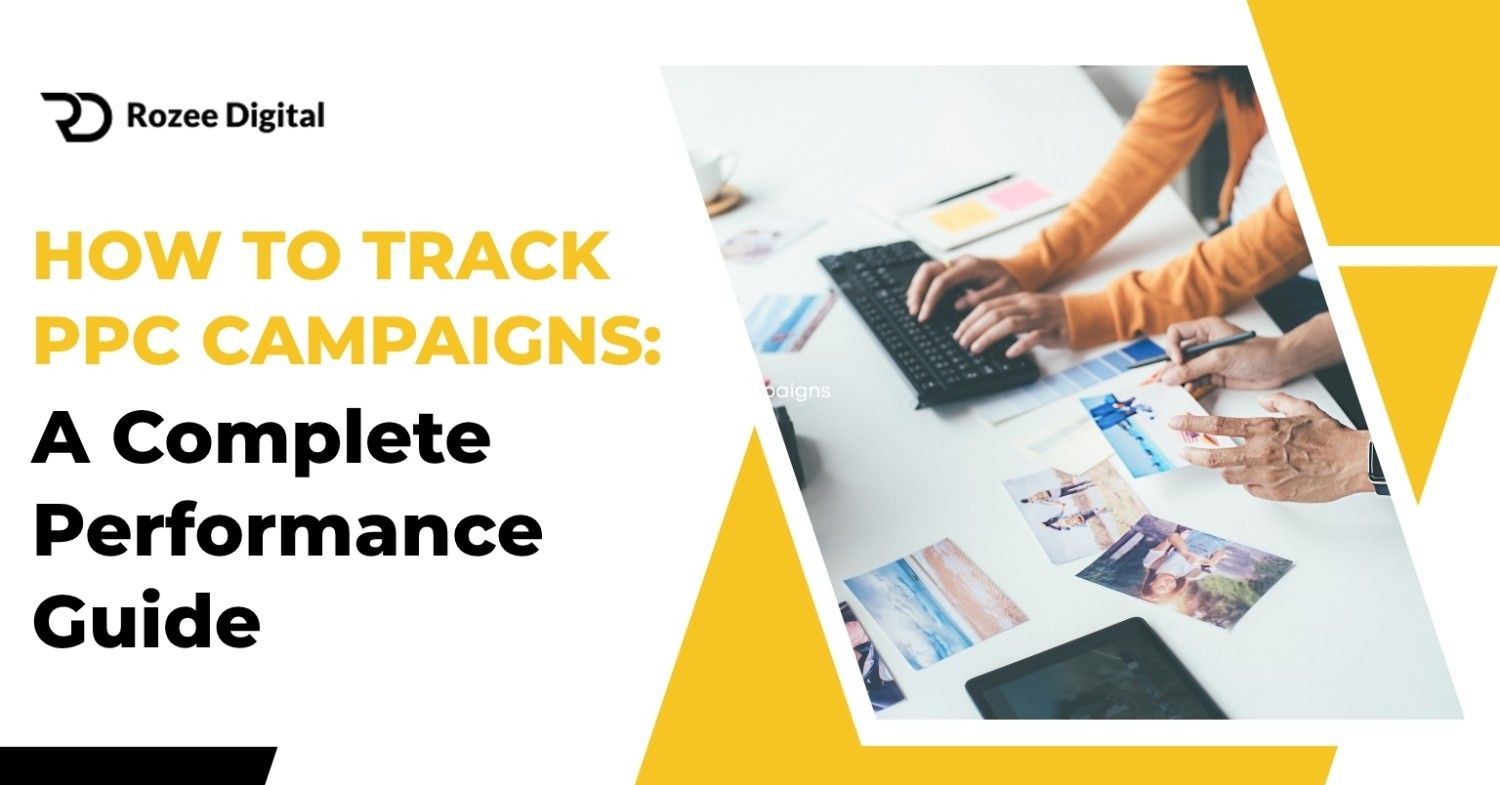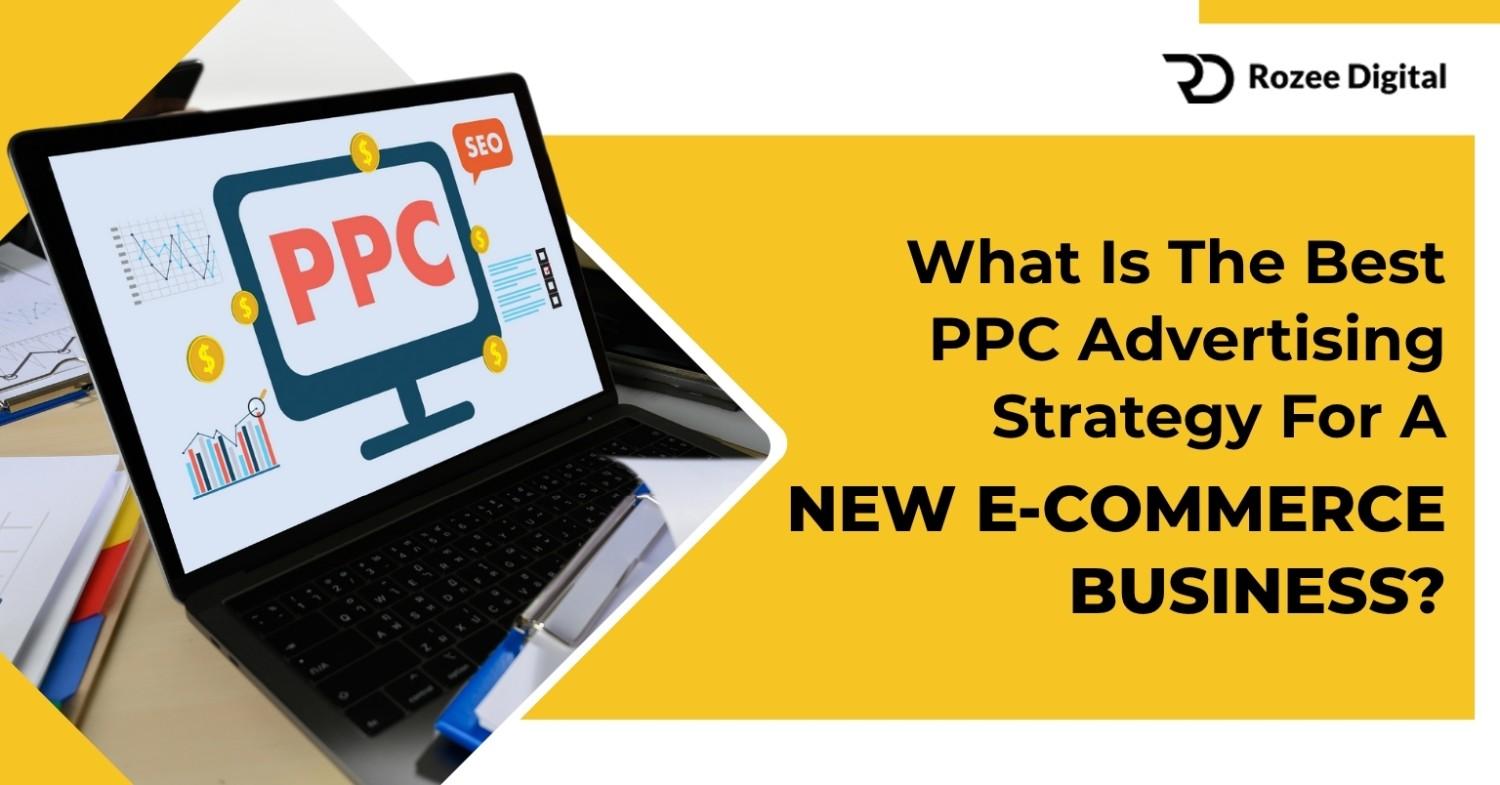Starting a new eCommerce business feels exciting and terrifying at the same time. You’ve built your store, listed your products, and now you’re staring at zero sales. The harsh truth is that 97% of first-time visitors won’t buy from you on their first visit.
That’s exactly where PPC advertising becomes your secret tool. When done right, paid ads can transform complete strangers into loyal customers faster than any other marketing channel. But most new store owners treat PPC like a guessing game. They throw money at ads and hope something sticks.
Don’t leave your store’s growth to chance. Rozee Digital’s PPC Ads Agency helps new eCommerce brands turn clicks into customers with data-driven campaigns. Claim your Free Strategy Call or call us at +447887880993 to start building a predictable path to sales.
Why New eCommerce Stores Must Invest in PPC Right Now
The eCommerce world has exploded in the past few years. Global online sales hit $5.8 trillion in 2023, according to Statista. That number is expected to reach $8 trillion by 2027. Competition isn’t just tough anymore. It’s absolutely ruthless.
Understanding the Current eCommerce Landscape and What It Means for You
New brands face a massive uphill battle that didn’t exist five years ago. You’re competing against companies with huge budgets and years of customer data. Organic reach on social media has dropped to just 5.2% for business pages.
That means only 5 people see your post for every 100 followers you have. Google Ads data shows average cost-per-click in eCommerce ranges from $1.16 to $2.50. Fashion brands see lower costs around $0.45 per click. Electronics sellers pay higher rates at $1.32 per click.
But here’s what most people miss completely. Big established brands optimize their ads for efficiency and profit. New brands should optimize for learning and data collection. Your first 90 days aren’t about making money.
They’re about understanding who your customers really are. Every click teaches you something valuable about your audience. Every conversion shows you what messaging works. Every abandoned cart reveals an objection you need to overcome.
Why Waiting to Start PPC Costs You More Than Money
Many new store owners think they should wait until they have more budget. They believe organic marketing should come first. This thinking costs them months of valuable time and data.
The longer you wait, the further behind you fall. Your competitors are collecting customer data right now. They’re testing different messages and finding what works. They’re building lookalike audiences from their best customers.
Starting small with PPC beats waiting for the perfect moment. Even $500 per month gives you enough data to learn and improve. You can test different product angles. You can see which audiences respond best.
The Best PPC Strategy for New E-Commerce Businesses treats this learning phase as the foundation for everything else. Small consistent steps beat big delayed plans every single time. The brands that win don’t wait for perfect conditions.
How Modern Shoppers Actually Buy Products Online
Today’s online customers don’t see an ad and buy immediately. They research, compare, read reviews, and think about it. Salesforce research shows customers interact with brands across 9+ touchpoints before purchasing.
The Multi Touch Customer Journey That Most Brands Ignore
Understanding this fragmented journey changes everything about your PPC strategy. A customer might discover you through a Google Shopping ad. Then they see your Facebook retargeting ad three days later. Finally they convert after receiving your email discount code.
Which ad deserves credit for the sale? Most new brands use last-click attribution models. This means they give all credit to the final ad someone clicked. This approach is dangerously wrong.
It makes you kill the discovery campaigns that actually start the customer relationship. Single-touch attribution misses 70-80% of the actual customer journey. You end up making decisions on incomplete information. Your best performing campaigns might look unprofitable because they assist sales rather than close them.
Apple’s iOS 14.5 update made tracking even harder. Privacy changes reduced tracking accuracy by 15-30% across all platforms. Smart brands adapted by focusing on first-party data. This means information customers willingly share through email signups, quizzes, and account creation works better than cookies.
Why First Party Data Became Your Most Valuable Asset
Relying on platform tracking alone leaves you blind to real performance. You need to build your own customer database from day one. Email addresses, phone numbers, and purchase history give you tracking that privacy updates can’t destroy.
Offering a discount for email signup seems basic but it works incredibly well. Most eCommerce brands see 2-3% of visitors convert to email subscribers. That might sound small but it’s massive long-term value.
Those emails become retargeting audiences, sources, and direct marketing channels. Quiz funnels work even better for certain products. A skincare brand asking about skin type collects valuable data. A furniture store asking about room dimensions helps customers and captures information.
Brands with strong first-party data saw less impact from iOS changes. They could still track customers accurately and attribute sales correctly. This gave them a massive advantage over competitors who relied only on Facebook’s pixel. Building this foundation early protects you from future privacy changes coming to Android and other platforms.
Choosing the Right PPC Platforms for Your Specific Products
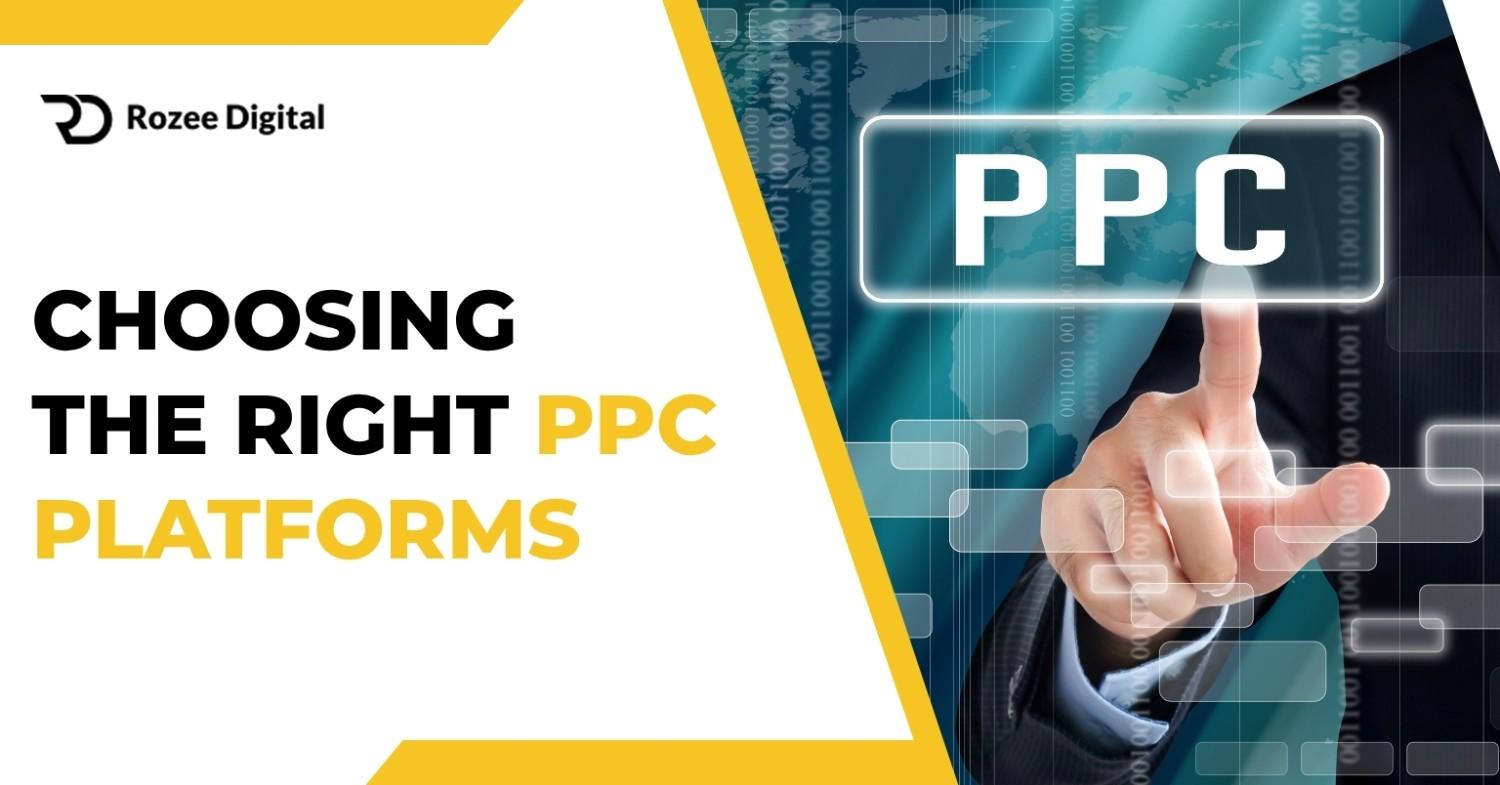
Not every advertising platform delivers the same results for eCommerce. Each platform serves different purposes and customer mindsets. Picking the wrong one wastes money fast. Picking the right one accelerates growth dramatically.
Google Ads Delivers High Intent Shoppers Ready to Buy
Google processes 8.5 billion searches every single day. These aren’t casual browsers. They’re people actively looking for solutions and products. Someone searching “buy running shoes size 10” has clear purchase intent.
They want to buy it right now. Google Shopping campaigns typically convert 2-3x better than regular search ads. The average conversion rate across Shopping campaigns sits at 1.91%. Compare that to display ads at just 0.35%.
Visual product cards with prices filter out non-serious shoppers before they even click. Google’s advantage is capturing demand that already exists. You’re not creating desire or explaining benefits. You’re showing up when someone is ready to buy.
This makes Google the most reliable platform for new stores with limited budgets. Every dollar spent reaches high-intent shoppers. The downside is limited audience growth potential. Google shows your ads to people actively searching.
Facebook and Instagram Excel at Creating Demand Through Discovery
Meta platforms operate completely differently from Google. People scrolling Instagram aren’t looking to buy anything. They’re entertaining themselves, checking on friends, and passing time. Your ad interrupts their casual browsing.
This means lower conversion rates but massive reach potential. Facebook and Instagram deliver average conversion rates around 0.9%. That’s half of Google Shopping’s performance. But these platforms offer unmatched targeting capabilities.
You can reach people based on interests, behaviors, life events, and demographics. A fitness brand can target people who recently got engaged for wedding workout plans. Visual products absolutely crush it on Meta platforms. Fashion, beauty, home decor, and lifestyle products thrive here.
Lookalike audiences give Meta ads their real power for scaling. Once you have 100+ purchases, Facebook finds people similar to your best customers. These lookalikes convert better than cold interest targeting. The Best PPC Strategy uses Meta for discovery while Google converts the demand created.
TikTok Ads Offer Lower Costs but Require Native Content
TikTok emerged as a serious eCommerce platform in 2024. Brands targeting Gen Z and younger millennials see CPCs 30-50% lower than Facebook. The platform’s algorithm favors new advertisers. This creates opportunities for small brands to compete with big players.
The catch is creative requirements. Polished brand videos bomb on TikTok. User-generated content style ads outperform professional productions by 3x. Your ads need to feel like regular TikTok content, not advertisements.
This requires different creative approaches than other platforms. TikTok works best for impulse purchase products priced under $50. The platform’s entertainment-first environment doesn’t suit complex B2B products or high-consideration purchases. But for trendy fashion, beauty, gadgets, and lifestyle products, TikTok drives massive volume at low costs.
Starting on TikTok requires commitment to content creation. You can’t just repurpose Facebook ads. You need to produce fresh native content regularly. For brands comfortable with video and willing to test creative approaches, TikTok offers incredible growth potential at costs that won’t exist forever.
Amazon Advertising Converts Browsers into Immediate Buyers
If you sell on Amazon’s marketplace, their advertising platform deserves serious consideration. Amazon has 310 million active customer accounts. These people already have payment information saved and trust the platform. They’re ready to click buy now.
Amazon Sponsored Products ads place your listings directly in search results. Average conversion rates range from 9-12%. That’s 5-6x higher than Facebook and even better than Google Shopping. The buying friction is nearly zero on Amazon.
People browse with intent to purchase. The major tradeoff is brand building. You’re selling on Amazon’s platform, not your own website. Customers remember Amazon, not your brand name.
You can’t collect email addresses or build direct customer relationships. For new brands with limited budgets, Amazon can provide immediate cash flow. The high conversion rates and low advertising costs make profitability easier. Use Amazon for revenue generation while building your own website simultaneously.
Creating Ad Creative That Actually Stops the Scroll
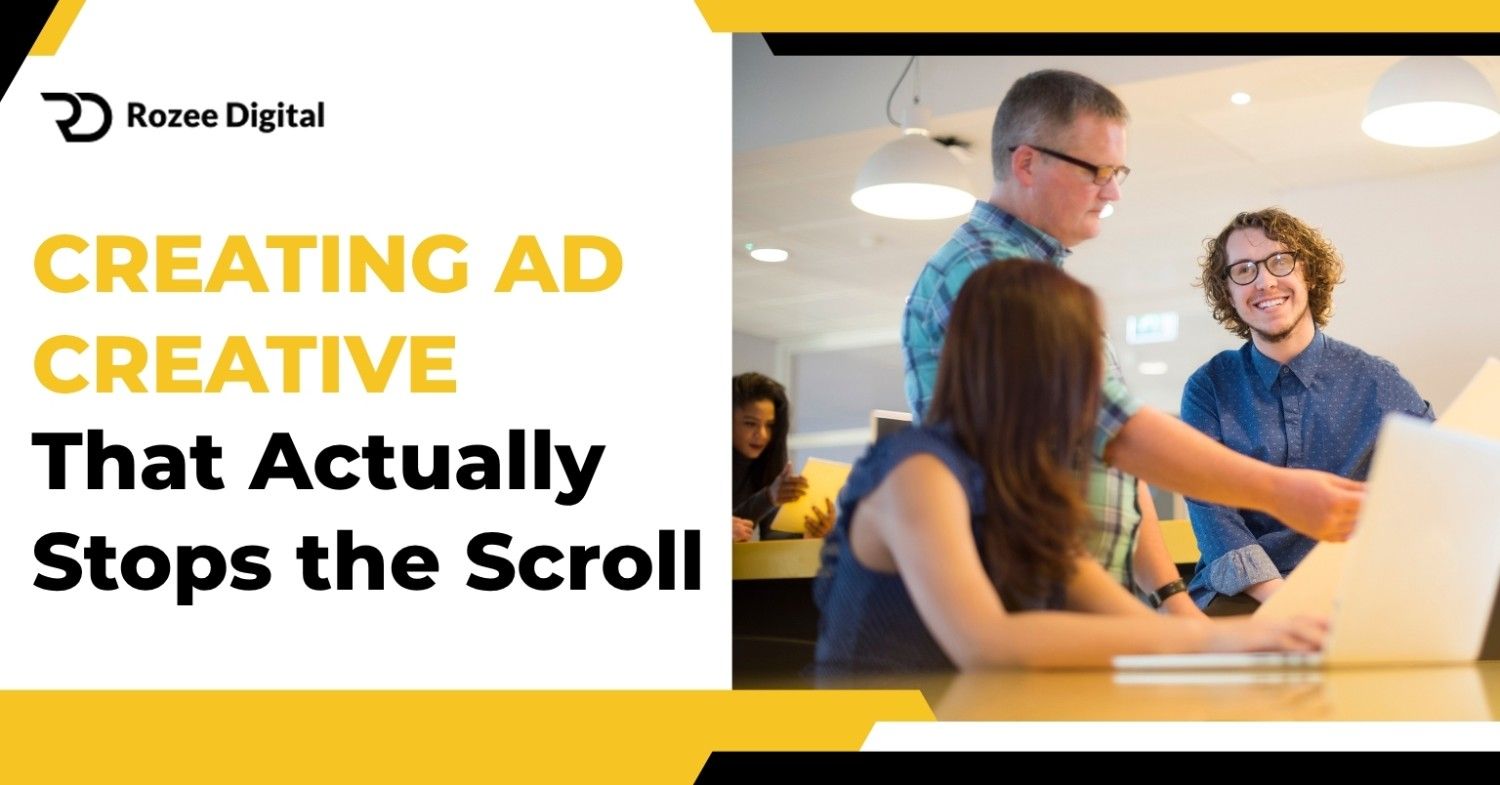
Your ad creative makes or breaks campaign performance completely. Even perfect targeting can’t save boring ads. Meta reports that creative accounts for 56% of campaign effectiveness. Targeting contributes just 14%. Creative is 4x more important than who you target.
Why User Generated Content Crushes Professional Product Photography
For new eCommerce brands, user-generated content style ads outperform professional photography significantly. Shoppers trust real people over models. A beauty brand switched from studio shots to customer selfies. Their conversion rate increased 189% overnight.
UGC feels authentic in a way polished brand content never does. People scrolling social media developed banner blindness to obvious ads. But content that looks like a friend’s post stops the scroll. This visual authenticity dramatically improves click-through rates.
The good news is UGC costs less to produce than professional shoots. You can create it yourself with a smartphone. Or incentivize customers to submit content through discount codes. Many brands run UGC contests where customers post photos for prize drawings.
Start collecting UGC from day one even with zero sales. Ask friends and family to create content. Partner with micro-influencers for product trades. Build a library of authentic visual content.
Video Ads Dominate Static Images Across Every Platform
Video ads generate 135% greater organic reach than photo posts on Facebook. TikTok’s algorithm heavily favors video content. Even Google Shopping now supports video assets. The trend is undeniable. Video outperforms static images everywhere.
But production value matters less than you think. Raw smartphone-shot videos often outperform $10,000 productions. Authenticity beats polish in eCommerce advertising. A founder talking directly to camera about their product story converts better than fancy graphics.
Keep videos short and front-loaded. You have 3 seconds to hook attention before people scroll past. Put your strongest message or visual in the first frame. Mobile viewers especially have zero patience for slow builds.
Test different video angles systematically. A fitness apparel brand tested three approaches: product features, lifestyle imagery, and problem-solution framing. The problem-solution angle delivered 3.2x better ROAS. You never know what resonates until you test.
Testing Multiple Ad Variations Reveals Unexpected Winners
Most brands create one or two ads and run them indefinitely. This approach leaves performance on the table. The Best PPC Strategy for New E-Commerce Businesses tests 5-10 variations per campaign. The data tells you what works.
Test different hooks in your first three seconds. Try various value propositions. Experiment with different visual styles. Use different calls to action. Each variable might significantly impact performance.
Winning ads usually emerge from unexpected places. Your favorite creative often bombs. The ad you almost didn’t run becomes your best performer. This happens constantly in eCommerce advertising. Personal preference doesn’t predict customer response.
Run new creative tests every 2-3 weeks minimum. Ad fatigue sets in as audiences see the same content repeatedly. Fresh creative maintains performance and prevents diminishing returns.
Optimizing Landing Pages Where Clicks Become Paying Customers
Driving traffic without optimized landing pages is like filling a bucket with holes. Industry data shows 96% of website visitors aren’t ready to buy. Your landing page must convince the remaining 4% while capturing the 96% for future marketing.
Page Speed Impacts Conversion Rates More Than Design
Google found that 53% of mobile users abandon sites taking longer than 3 seconds to load. Each additional second of load time decreases conversions by approximately 7%. New eCommerce brands often overlook this.
They use heavy product images and unnecessary plugins that destroy speed. Test your site speed using Google PageSpeed Insights or GTmetrix. These free tools identify specific problems slowing your site down. Common culprits include unoptimized images, too many app integrations, and bloated code.
Compress all product images before uploading them. Use formats like WebP that load faster than traditional JPEG. Remove apps and plugins you’re not actively using. Every integration adds loading time.
Fast loading pages improve your Quality Score on Google Ads. This means lower costs per click and better ad positions. Speed affects both user experience and advertising efficiency. Fix speed issues before running any traffic.
Message Match Between Ads and Landing Pages Drives Conversions
Your landing page must match the ad promise exactly. If your Google ad promotes 20% off running shoes, the landing page better showcase running shoes with that discount prominent. Unbounce research shows strong match improves conversion rates by up to 212%.
Disconnection between ad and page creates confusion and mistrust. Someone clicks an ad expecting a specific product or offer. They land on your homepage or a generic category page. They can’t easily find what the ad promised.
Create dedicated landing pages for major campaigns. A summer sale deserves its own landing page with sale products featured. Don’t send people to your homepage and expect them to hunt. Remove friction at every step.
Use the same language and imagery from your ad on the landing page. If your ad headline says “Organic Cotton T-Shirts,” your landing page headline should repeat that phrase. Visual consistency creates a seamless experience.
Social Proof Elements Build Trust with Skeptical First Time Visitors
Spiegel Research Center found that social proof elements increase conversion rates by an average of 34%. Reviews, testimonials, trust badges, and press mentions overcome skepticism. New brands lack extensive reviews so you need creative approaches.
Showcase any press mentions or features you’ve received. Display security badges like SSL certificates and payment processor logos. Highlight your money-back guarantee or return policy prominently. These trust signals matter especially for unknown brands.
Start collecting reviews immediately from your first customers. Send follow-up emails asking for feedback. Offer small incentives like discount codes for future purchases. Build your review library systematically from day one.
Use founder stories and behind-the-scenes content to build authenticity. People connect with people, not faceless corporations. Show who makes the products. Explain why you started the company.
Implementing Tracking That Shows Real Performance
If you can’t measure it, you can’t improve it. Most new eCommerce brands either track nothing or track everything poorly. The Best PPC Strategy for New E-Commerce Businesses requires bulletproof tracking from the very first campaign.
Basic Tracking Setup Every New Store Needs Immediately
Start with Google Analytics 4, Facebook Pixel, and platform-specific conversion tracking everywhere you advertise. These free tools provide foundational performance data. Install them correctly before spending a single dollar on ads.
Verify your tracking actually works before launching campaigns. Place a test order yourself. Check if it appears in Google Analytics and ad platforms. Many new brands run campaigns for weeks before realizing their tracking never worked.
Basic tracking isn’t enough anymore though. iOS privacy changes and cookie restrictions mean platform-reported numbers often overstate performance by 15-30%. Facebook claims you got 50 conversions. Your actual bank statement shows 35 orders.
Focus on Metrics That Actually Predict Profitability
New brands obsess over clicks and impressions. These vanity metrics don’t pay bills. Instead track ROAS, CPA, AOV, and LTV. These metrics determine if your business actually makes money.
ROAS shows revenue generated per dollar spent. Target minimum 2x for new brands. This means every dollar in ads returns two dollars in revenue. Lower than 2x typically means unprofitable campaigns.
CPA reveals how much you spend acquiring one customer. This must stay below customer lifetime value for sustainable growth. If acquiring a customer costs $50 but they only spend $40 total, you’re burning money.
Setting Up Attribution Models That Show the Full Journey
Single-touch attribution is dangerously misleading for eCommerce brands. It gives all credit to the last ad clicked before purchase. This completely ignores the 8+ touchpoints that led to that final click.
Google Analytics 4 offers data-driven attribution that distributes credit across the entire customer journey. This shows which channels assist conversions versus which close sales. Both matter equally. You need discovery channels feeding warm audiences to conversion channels.
Use tools like Triple Whale, Northbeam, or Polar Analytics for consolidated cross-platform reporting. These tools aggregate data from multiple ad platforms and your Shopify store. They account for attribution challenges and show blended performance.
Many successful brands track multiple attribution windows. They look at 1-day, 7-day, and 28-day windows simultaneously. This reveals short-term and long-term campaign impact. Understanding both matters for accurate decision making.
Scaling Profitable PPC Campaigns Without Destroying Margins
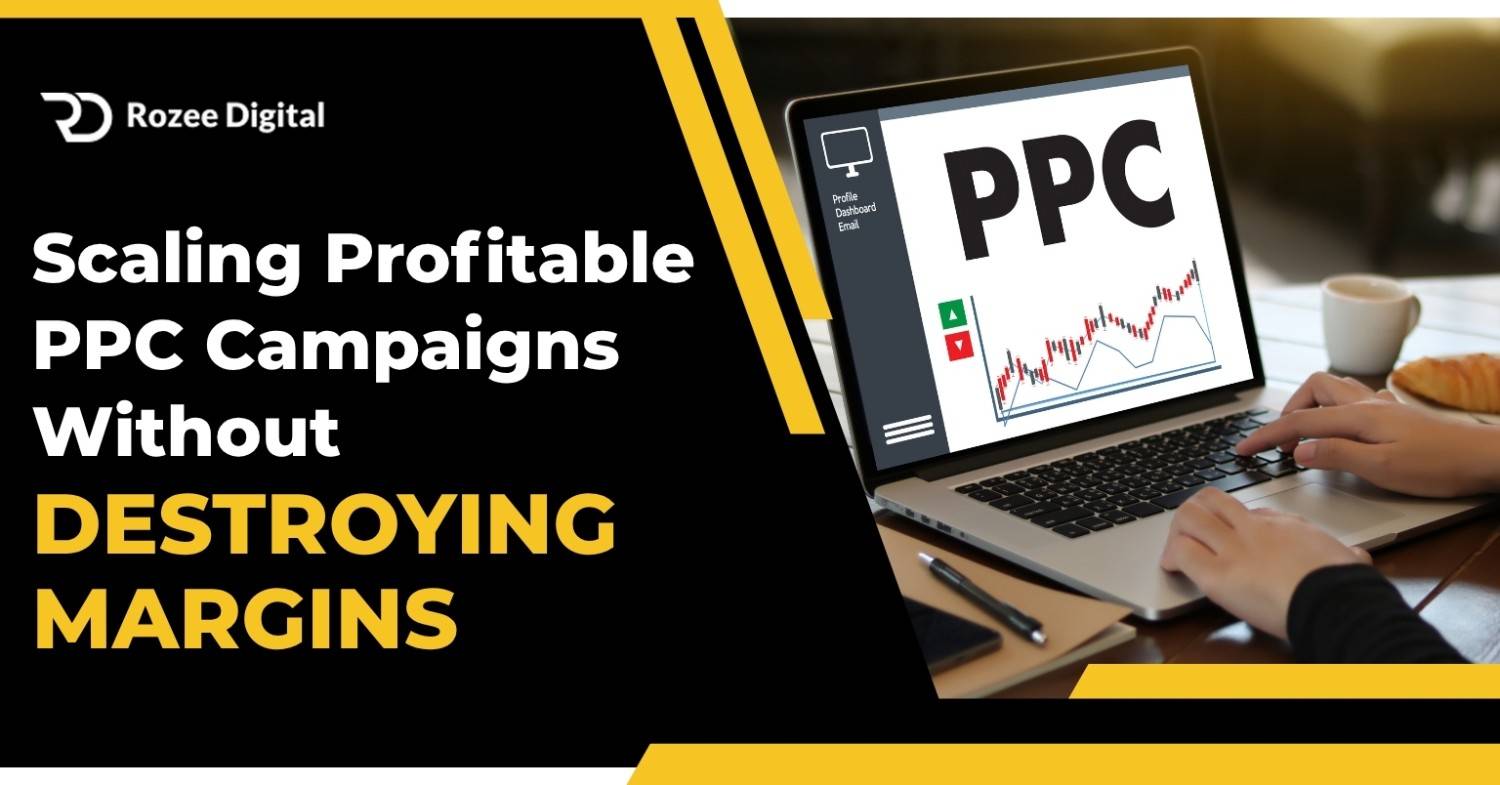
Once you achieve consistent profitability (2.5x+ ROAS for 60+ days), you’re ready to scale. But scaling isn’t just “spending more money.” Reckless scaling destroys margins and burns cash faster than starting cold.
The 20 Percent Rule for Stable Budget Increases
Increase budgets by 20% weekly, never daily. Rapid budget increases trigger ad platform learning periods that temporarily decrease performance. Facebook enters learning mode whenever you adjust budgets by more than 30%.
Weekly 20% increases allow platforms to adapt gradually. The algorithm adjusts to higher spending without complete resets. This maintains efficiency while expanding reach. Patient consistent scaling outperforms aggressive budget dumps every time.
Monitor your efficiency metrics closely during scaling. Watch for rising CPAs or declining ROAS. These signals indicate you’re hitting audience saturation. Every audience has a finite size.
Horizontal Scaling Multiplies Winning Campaigns
Horizontal scaling means duplicating winning campaigns with slight variations. Found a Facebook ad set performing beautifully? Create 3-5 duplicates targeting similar but not identical audiences. This multiplies reach without cannibalizing existing campaigns.
Test different audience segments with the same creative that already works. If 25-34 year old women convert well, test 35-44 year olds. If fitness enthusiasts work, try yoga practitioners. Expand to adjacent interests.
Duplicate successful campaigns to new geos if you ship internationally. A campaign crushing it in the United States might work equally well in Canada, UK, or Australia. Test new markets with proven ads.
This approach scales revenue while maintaining efficiency. You’re not forcing higher budgets on campaigns that resist it. You’re finding new pockets of similar audiences who respond to your proven messaging.
When and How to Add New Advertising Channels
Add new platforms only after your primary channels deliver consistently. If Google Shopping generates 4x ROAS for three months straight, test Google Search campaigns. If Facebook crushes it, try Instagram Reels.
Don’t expect immediate profitability from new channels. Give each platform 60 days minimum to prove itself. Early performance often looks worse than it actually is. Platforms need time to learn your audience.
Platform data shows brands advertising on 3+ channels see 287% higher customer lifetime value than single-channel brands. Omnichannel customers engage deeper with your brand. Repeated exposure across different contexts builds trust faster.
Start new channels with small budgets ($500-1,000 monthly) to test viability. Scale only after proving profitability. Some channels just won’t work for your specific product. Accept this quickly and reallocate the budget.
Planning for Seasonal Trends and Major Shopping Events
eCommerce is wildly seasonal. Q4 (October through December) generates 30-40% of annual revenue for most online retailers. Ignoring seasonal patterns means leaving massive revenue on the table.
Start Preparing for Major Sales Events Months in Advance
Black Friday Cyber Monday campaigns should begin mid-October, not the week of the event. Build your retargeting audiences early. Prime potential customers weeks before your sale starts.
Shopify data shows brands starting BFCM promotions in mid-October generate 32% more revenue than those starting on Black Friday. Create holiday gift guides and seasonal content in September. This content ranks in search engines and builds awareness.
Stock inventory appropriately for increased seasonal demand. Nothing is worse than running successful campaigns then selling out. Calculate expected order volume based on ad spend and historical conversion rates. Order extra inventory.
Take Advantage of Low Competition Periods
January and February often deliver the best ROAS of the year. Competition decreases dramatically as brands exhaust Q4 budgets. CPCs drop 20-40% while conversion rates stay stable.
Smart brands shift focus to customer retention and upselling during these months. Many brands pause ads completely after the holidays. This creates opportunities for brands that maintain consistent presence. You face less competition for the same audience attention.
Use slow periods for testing and optimization. Try new creative angles without worrying about peak season pressure. Test new platforms at lower costs. Build lookalike audiences from your holiday customers.
Day of week and hour of day timing affects performance significantly too. Google Ads data shows Thursdays and Fridays typically deliver highest conversion rates. Mondays lag behind other weekdays.
Your 90 Day Roadmap to PPC Profitability
New eCommerce brands need structure and clear milestones. Here’s a proven 90-day roadmap implementing The Best PPC Strategy for New E-Commerce Businesses in 2025. Follow this framework and adjust based on your specific results.
Days 1 Through 30 Focus on Foundation and Data Collection
Set up all conversion tracking and analytics infrastructure correctly. This week determines data quality for months ahead. Install Facebook Pixel, Google Analytics 4, and platform-specific tracking. Verify everything works with test purchases.
Launch Google Shopping campaigns targeting your 10-15 best-selling products. Keep budgets conservative at $30-50 daily. The goal is learning, not profits yet. Watch which products get clicks and conversions.
Start one Meta campaign testing 5+ ad creative variations. Try different hooks, product angles, and visual styles. Let the platform spend equally across all creative initially. After week two, shift budget to winning ads.
Days 31 Through 60 Optimize Based on Real Performance Data
Analyze your first month data ruthlessly. Kill underperforming products and ads without emotion. Cut the bottom 50% by ROAS. Successful scaling requires focusing resources on winners.
Double down on winning products and ad creative. Increase budgets 20% on campaigns delivering 2x+ ROAS. Add new creative variations testing different angles for your best products. Optimize product pages based on traffic data.
Implement retargeting campaigns for website visitors and cart abandoners. These campaigns typically deliver 3-5x ROAS immediately. They’re your lowest hanging fruit for improved profitability. Dedicate 30-40% of budget to retargeting.
Days 61 Through 90 Scale Winners and Expand Strategically
Increase budgets 20% weekly on profitable campaigns. This controlled scaling maintains efficiency while expanding reach. Watch for diminishing returns signals like rising CPAs or declining ROAS. Pull back if efficiency drops.
Launch testing on a second platform if not already active. If Google worked well, try Meta. If Meta crushed it, test TikTok. Keep new platform budgets small during initial testing.
Implement dynamic product ads showcasing your full catalog to warm audiences. These ads automatically show people products they viewed. They’re highly effective for driving repeat purchases and cross-sells.
Building Long Term Value Beyond First Purchase ROAS
Short-term ROAS obsession kills businesses slowly. A customer buying once for $50 might generate $300 over two years through repeat purchases. If you optimize only for first purchase profitability, you under-invest in customer acquisition.
Calculate Your True Customer Lifetime Value
For subscription products, LTV calculation is straightforward. Multiply average order value by average subscription length. For one-time purchase products, it’s trickier but still essential. Track cohort retention carefully.
What percentage of customers who bought in January make a second purchase within 6 months? Industry benchmarks suggest eCommerce brands should aim for a 3:1 LTV to CAC ratio. If your customer lifetime value is $150, you can afford up to $50 in acquisition costs.
If you’re only willing to pay $20 CPA targeting 2.5x first-purchase ROAS, you’re likely leaving growth on the table. Email and SMS marketing dramatically increase customer lifetime value. A welcome series email sequence improves repeat purchase rates by 50-80%.
Implement Retention Systems That Drive Repeat Purchases
Subscription or membership programs create predictable recurring revenue. Dollar Shave Club’s entire business model relied on low first-order economics. Subscription retention delivered enormous lifetime value. Even if you don’t sell consumables, consider memberships offering early access or exclusive discounts.
Post-purchase email flows keep customers engaged. Send order confirmations, shipping updates, and product care tips. Include cross-sell recommendations based on what they bought. These automated sequences require setup once but generate revenue forever.
Loyalty programs incentivize repeat purchases through points, tiers, or exclusive perks. Brands with loyalty programs see 30-40% higher retention rates. Even simple “buy 5 get 1 free” punch cards work for certain products.
Actionable Takeaways
Start Small and Test Consistently
Begin with a modest budget to test ad creatives, messaging, and audiences. Small, consistent steps help you learn what resonates without overspending. Each click and conversion provides insights about your customers.
Run multiple variations on Google, Meta, and TikTok. Testing multiple angles early identifies winning campaigns quickly.
Monitor performance weekly and optimize based on real data. Refining audiences, creatives, and offers builds a strong foundation for scaling efficiently.
Build First-Party Data and Multi-Channel Attribution
Collect emails, quiz responses, and account information from day one. This data powers retargeting and lookalike audiences while platform tracking alone can be unreliable.
Use multi-touch attribution to understand the full customer journey. Avoid relying solely on last-click conversions, and invest in channels that assist sales early.
Analyze results regularly and adjust campaigns. Tracking accurately ensures smarter decisions and sustainable growth over time.
Optimize Creatives, Landing Pages, and Retention
Prioritize short videos, user-generated content, and authentic visuals to capture attention. Creative testing is key to discovering what converts best.
Ensure landing pages align with your ad messaging. Fast load times, clear offers, and trust signals help turn clicks into purchases.
Focus on retention through email sequences, SMS, and loyalty programs. This maximizes repeat purchases and drives long-term business growth.
Frequently Asked Questions
Q1: How much should I spend on PPC as a new eCommerce business?
Start small with $500–$1,000 per month. Focus on data collection and learning, not immediate profits. Gradually scale as campaigns show consistent results.
Q2: Which PPC platform is best for beginners?
Google Shopping is ideal for high-intent buyers, Meta platforms for discovery, TikTok for younger audiences, and Amazon for immediate conversions. Test one primary platform first.
Q3: How do I know which ads are performing best?
Track ROAS, CPA, and conversion metrics, not clicks. Test multiple creative variations and monitor performance every 2–3 weeks. Unexpected winners often appear from underdog ads.
Q4: What role does landing page optimization play in PPC?
Landing pages must match ad messaging, load quickly, and include social proof. A seamless experience converts more clicks into paying customers.
Q5: How can I maximize long-term value from PPC campaigns?
Collect first-party data, implement email and SMS flows, and build loyalty programs. Focus on repeat purchases and retention, not just first-order ROAS.
